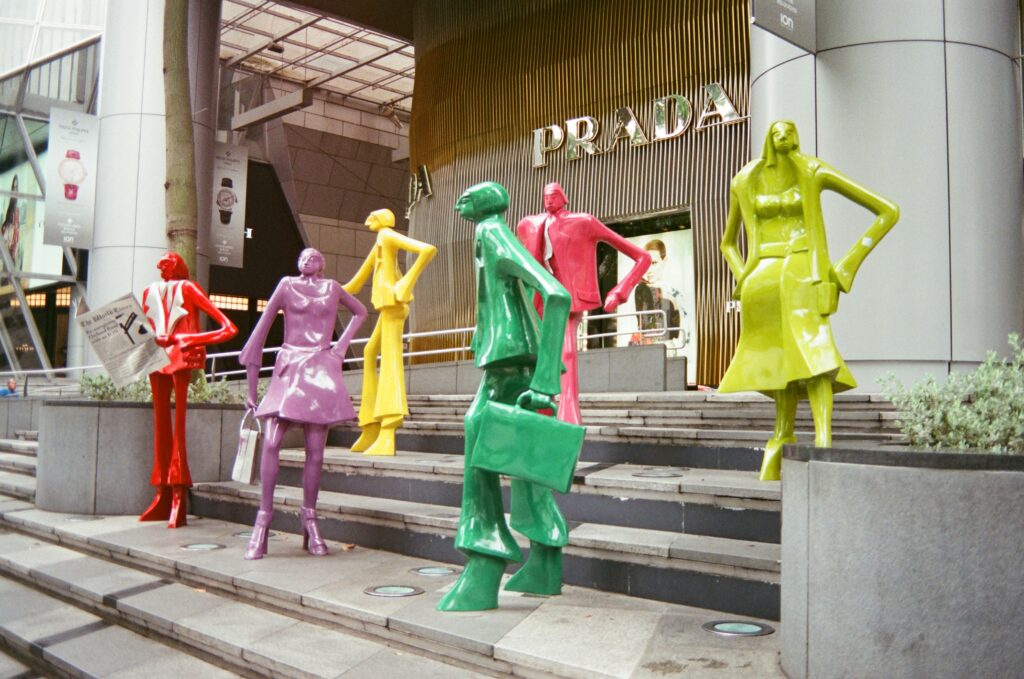In a historic move, Prada has acquired Versace for €1.25 billion, marking a landmark deal in the luxury fashion world. The acquisition was made at a €180 million discount from the initial €1.43 billion valuation. This discount was attributed to market volatility, largely driven by uncertainties linked to U.S. trade policies under President Trump.
After months of speculation and stalled negotiations, the deal unites two of Italy’s most iconic fashion houses under one umbrella. Prada’s successful bid follows a failed $8.5 billion takeover attempt of Capri Holdings—the parent company of Versace, Michael Kors, and Jimmy Choo—by U.S.-based Tapestry. The U.S. Federal Trade Commission blocked that acquisition last year, which put pressure on Capri to sell assets and reduce its debt.
A Strategic Move for Prada
The acquisition of Versace is a significant step in Prada’s long-term strategy to expand its influence in the luxury fashion industry. In a statement, Prada Group chair Patrizio Bertelli emphasized that the company is “ready and well positioned to write a new page in Versace’s history.” He highlighted the shared values of creativity and craftsmanship between the two brands.
This acquisition not only strengthens Prada’s portfolio but also solidifies its position as a global powerhouse in the luxury fashion sector. Prada’s portfolio now includes its core labels Prada and Miu Miu, alongside other prestigious assets such as footwear brands Church’s, Car Shoe, and Luna Rossa. Additionally, Prada owns the Luna Rossa sailing team and the iconic Marchesi pastry brand.
The deal represents a second chance for Prada to solidify its position on the global stage after facing setbacks in its previous expansion attempts. In the late 1990s and early 2000s, Prada made efforts to broaden its reach, but internal conflicts and financial issues led to exits from high-profile brands like Jil Sander, Helmut Lang, and Alaia by 2007.
A Changing Leadership for Versace
The acquisition brings significant leadership changes to Versace. Dario Vitale, formerly of Miu Miu, will replace Donatella Versace as the new creative director. After 27 years at the creative helm of Versace, Donatella will transition into the role of chief brand ambassador. In this position, she will focus on celebrity styling and charitable initiatives.
Donatella’s shift in leadership marks a pivotal moment for Versace, but her legacy in the fashion world remains strong. Under her direction, Versace became synonymous with bold, sensual glamour. Despite the change in leadership, Donatella’s influence in shaping the brand will continue in a new, more ambassadorial role.
Two Giants with Different Philosophies
Though Prada and Versace have often been seen as rivals with differing design philosophies, the two brands now stand together under the same corporate umbrella. Prada has built its reputation on intellectual and conceptual designs, while Versace has become a symbol of bold, sensual glamour. Despite their differences, Miuccia Prada and Donatella Versace share a mutual admiration for one another’s work.
In a 2012 interview, Versace reflected on their relationship, saying, “We just talk, talk, talk… She says, ‘I could never make sexy clothes, but I love them.’ And I say, ‘Well, I love what you do.’” This exchange highlights the respect and mutual admiration between the two women, despite their differing approaches to fashion.
Prada’s Resilience Amid Industry Slowdown
While many luxury brands have struggled in the face of global economic uncertainty, Prada has continued to thrive. The company reported €5.4 billion in revenue for 2024, marking a 17% year-over-year increase. A major factor behind this success has been the booming popularity of Miu Miu, which has nearly doubled its profits thanks to viral trends like micro-miniskirts and ballet flats. With these trends, Miu Miu is quickly closing in on £1 billion in sales.
The strong performance of Miu Miu showcases Prada’s ability to adapt and innovate, even in a challenging market. The acquisition of Versace further strengthens the company’s position as a leader in luxury fashion, with a more diverse portfolio and greater influence in global markets.
A New Phase for Italy’s Fashion Legacy
The Prada-Versace deal marks a new phase in the Italian fashion industry. As the global luxury fashion landscape evolves, Prada’s bold move to acquire Versace signals its intent to dominate the sector. The combination of the two brands creates a powerful force that can challenge other luxury conglomerates and further enhance Italy’s reputation as a global fashion leader.
While the full impact of the acquisition remains to be seen, Prada’s purchase of Versace represents a strategic step that consolidates power and creativity within the Italian fashion industry. As the brands move forward together, the fashion world will be watching closely to see how this new chapter unfolds.


